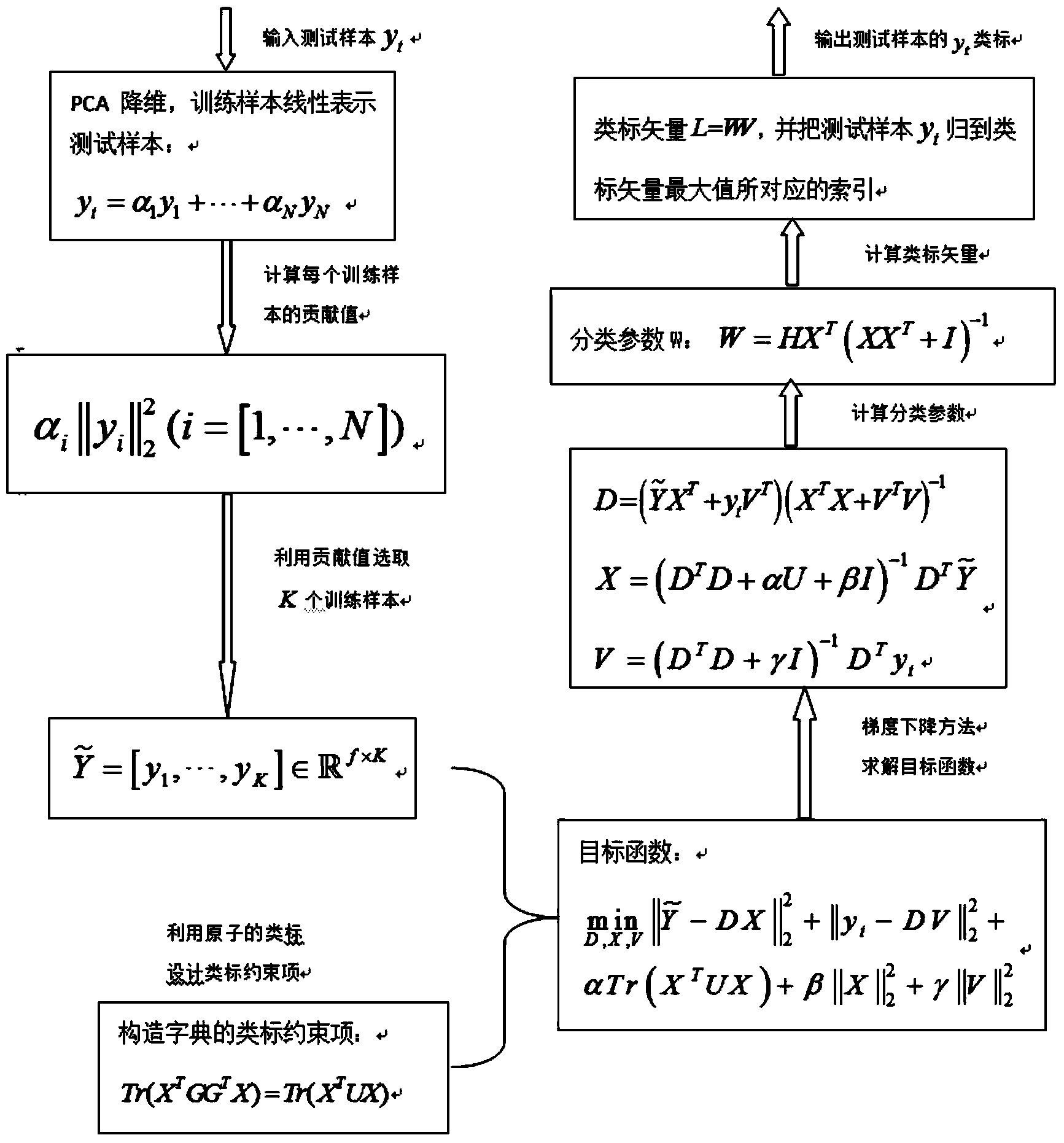Constraint-based face identification method for single test sample
A test sample and face recognition technology, applied in the field of face recognition, can solve problems such as the influence of training sample noise, separate processing, and sparse representation of test samples
- Summary
- Abstract
- Description
- Claims
- Application Information
AI Technical Summary
Problems solved by technology
Method used
Image
Examples
Embodiment Construction
[0048] The present invention will be further described below in conjunction with the accompanying drawings.
[0049] Such as figure 1 As shown, in the current pattern classification algorithm based on dictionary learning, dictionary learning and sparse representation of test samples are processed separately. The present invention adds the sparse representation of test samples into the dictionary learning process, and designs a discriminative dictionary learning algorithm oriented to a single test sample in combination with atomic class label constraints, so that each test sample learns a specific dictionary, and at the same time uses the dictionary to perform a test on the test sample Classification. Aiming at the problem of high computational complexity of the algorithm, a two-stage discriminative dictionary learning framework and a face recognition system for a single test sample are proposed. Suppose the training sample set is N is the number of training samples, and n ...
PUM
 Login to View More
Login to View More Abstract
Description
Claims
Application Information
 Login to View More
Login to View More - R&D
- Intellectual Property
- Life Sciences
- Materials
- Tech Scout
- Unparalleled Data Quality
- Higher Quality Content
- 60% Fewer Hallucinations
Browse by: Latest US Patents, China's latest patents, Technical Efficacy Thesaurus, Application Domain, Technology Topic, Popular Technical Reports.
© 2025 PatSnap. All rights reserved.Legal|Privacy policy|Modern Slavery Act Transparency Statement|Sitemap|About US| Contact US: help@patsnap.com



